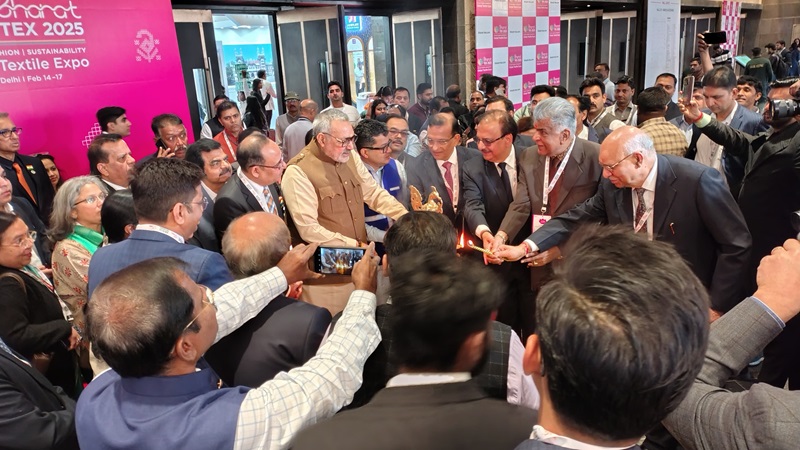FW
India has reclaimed its place as the 'Cotton King' in global market. With its vast acreage under cultivation and a thriving textile industry, India has emerged as a dominant force in cotton production and export. This resurgence is due to numerous factors like government initiatives, technological advancements, and the resilience of Indian farmers. However, challenges such as climate change and pest infestations continue to pose a threat to this vital sector.
The ‘Cotton Kingdom’
As per the Ministry of Textiles, India has the largest area under cotton cultivation globally, accounting for approximately 39 per cent of the world's total cotton acreage. India is one of the top producers of cotton globally. As Sanjay Kumar, President of the Cotton Association of India says, "India's cotton sector has witnessed a remarkable transformation in recent years. The government's focus on promoting sustainable farming practices and supporting technological advancements has helped to boost production and quality. This has made India a preferred supplier in the global cotton market."
Ministry of Textiles report says, India is the only country which grows all four species of cotton. India's dominance in the global cotton market is not merely a matter of production volume. Several factors contribute to its strength. First is the abundant resource with a large area under cotton cultivation, providing a substantial raw material base. A vast pool of skilled labor is available for farming, ginning, and textile manufacturing. The adoption of Bt cotton and other modern technologies has boosted productivity and quality. Government policies like MSP and export incentives provide support to the cotton sector. And a thriving domestic textile industry provides a ready market for Indian cotton.
India scores higher as a cotton exporter than many other countries because of its competitive pricing. Also the quality of Indian cotton has improved significantly in recent years. India has a well-established supply chain, ensuring timely delivery of cotton to exporters. And the diverse range of cotton species grown in India allows it to cater to specific requirements of different buyers.
Some major export destinations are:
China: Despite being a major cotton producer, China imports significant quantities from India. In fact, China's growing demand for high-quality cotton has provided an opportunity for Indian exporters.
Bangladesh: Bangladesh's robust garment industry relies heavily on imported cotton, with India being a primary supplier.
Vietnam: Similar to Bangladesh, Vietnam's textile sector depends on cotton imports, making India a key trading partner.
Pakistan: Although facing political tensions, Pakistan remains an important market for Indian cotton due to its proximity and established trade links.
Challenges in the cotton fields
Despite its strong position, the cotton sector has numerous challenges. Climate change, with erratic rainfall patterns and rising temperatures, poses a significant threat to yields. Pest infestations, such as the pink bollworm, also wreak havoc on crops, causing substantial losses. "Approximately 67 per cent of Indian's cotton is produced on rain-fed areas and 33 per cent on irrigated lands," reveals the Ministry of Textiles report.
Also, prices have a significant impact on the industry. Price fluctuations affect the cost of production, impacting global competitiveness. To mitigate this risk, the government has implemented policies to stabilize cotton prices and ensure a steady supply of raw materials.
To address other challenges, the government has launched several initiatives. The Cotton Corporation of India (CCI) plays a crucial role in procuring cotton from farmers at Minimum Support Prices (MSP), ensuring a stable income. The government also promotes the use of Bt cotton, that is resistant to certain pests, to improve yields.
The cotton-textile symbiosis
The cotton industry is linked to the textile sector. The availability of high-quality cotton at competitive prices is essential for the textile industry. The textile industry, in turn, is market for domestic cotton. This symbiotic relationship has helped both sectors to grow. "The textile industry consumes a diverse range of fibres and yarns and the ratio of use of cotton to non-cotton fibres in India is around 60:40 whereas it is 30:70 in the rest of the world," notes the Ministry of Textiles.
With government support, technological advancements, and the adoption of sustainable farming practices, India is ready to strengthen its position as the 'Cotton King' of the world.
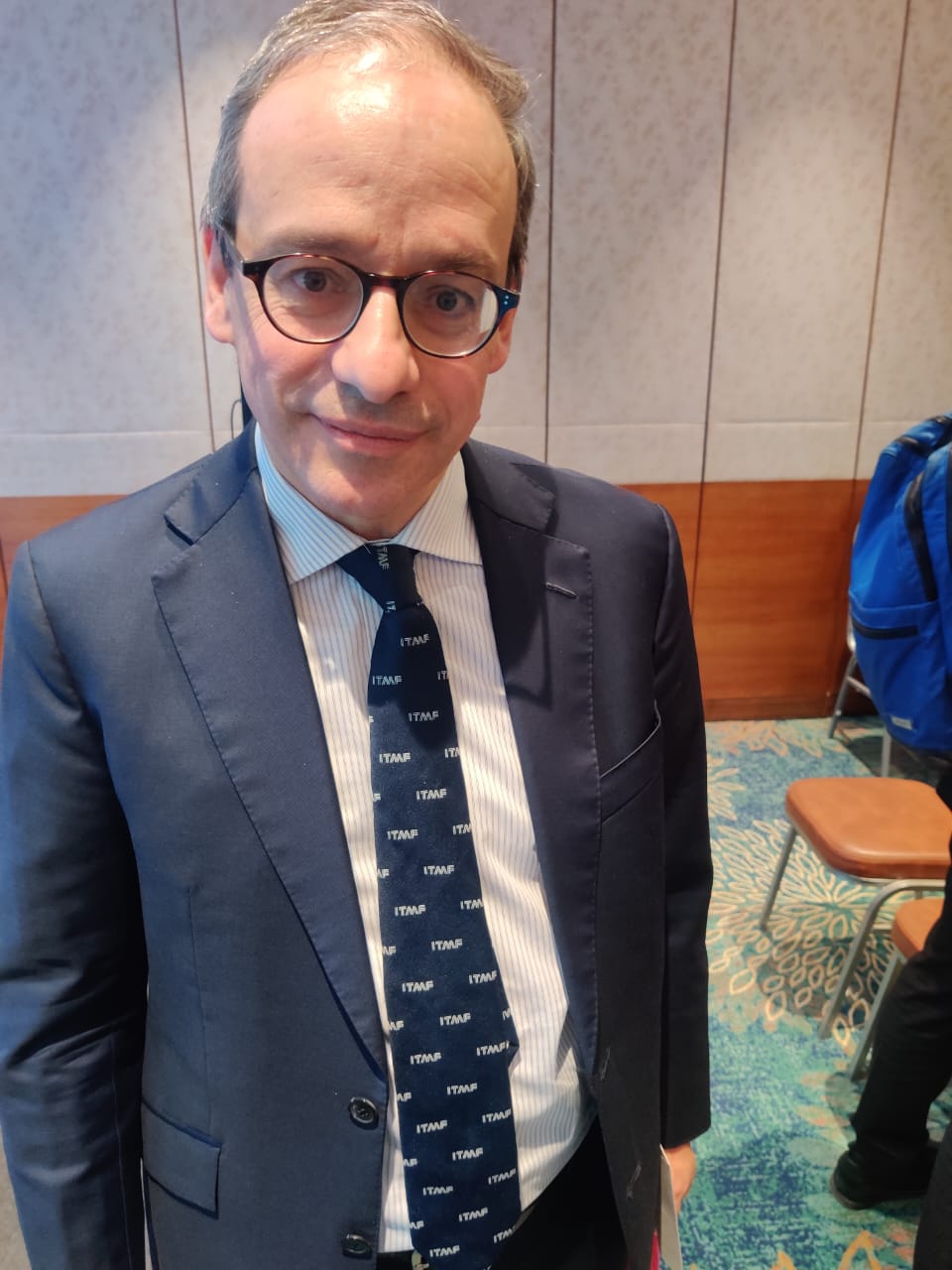
Bharat Tex 2025 served as a crucial platform for discussions surrounding the global textile industry's current state and future prospects. Christian P Schindler, Director General of the International Textile Manufacturers Federation (ITMF), provided a comprehensive overview, highlighting both the challenges and the significant opportunities that lie ahead.
Global Demand Dynamics: A two-year slump and pockets of resilience
Schindler addressed the elephant in the room: the persistent decline in global textile demand over the past two years. He cited ITMF surveys indicating widespread struggles with rising costs and weakened market demand. However, he offered a glimmer of hope, pointing to South America, specifically Brazil, as a region bucking the trend and demonstrating resilience against the global downturn. This regional variance underscores the complex and dynamic nature of the current market.
India's Textile Potential: A beacon of opportunity in Asia
Amidst the global challenges, Schindler emphasized India's immense potential within the Asian textile landscape. He lauded India's vast workforce, rich textile traditions, and abundant raw materials, positioning the country as a potential leader in textile production in the coming years. His remarks resonated strongly with the audience, reinforcing the belief in India's ability to reclaim its historical significance in the global textile arena.
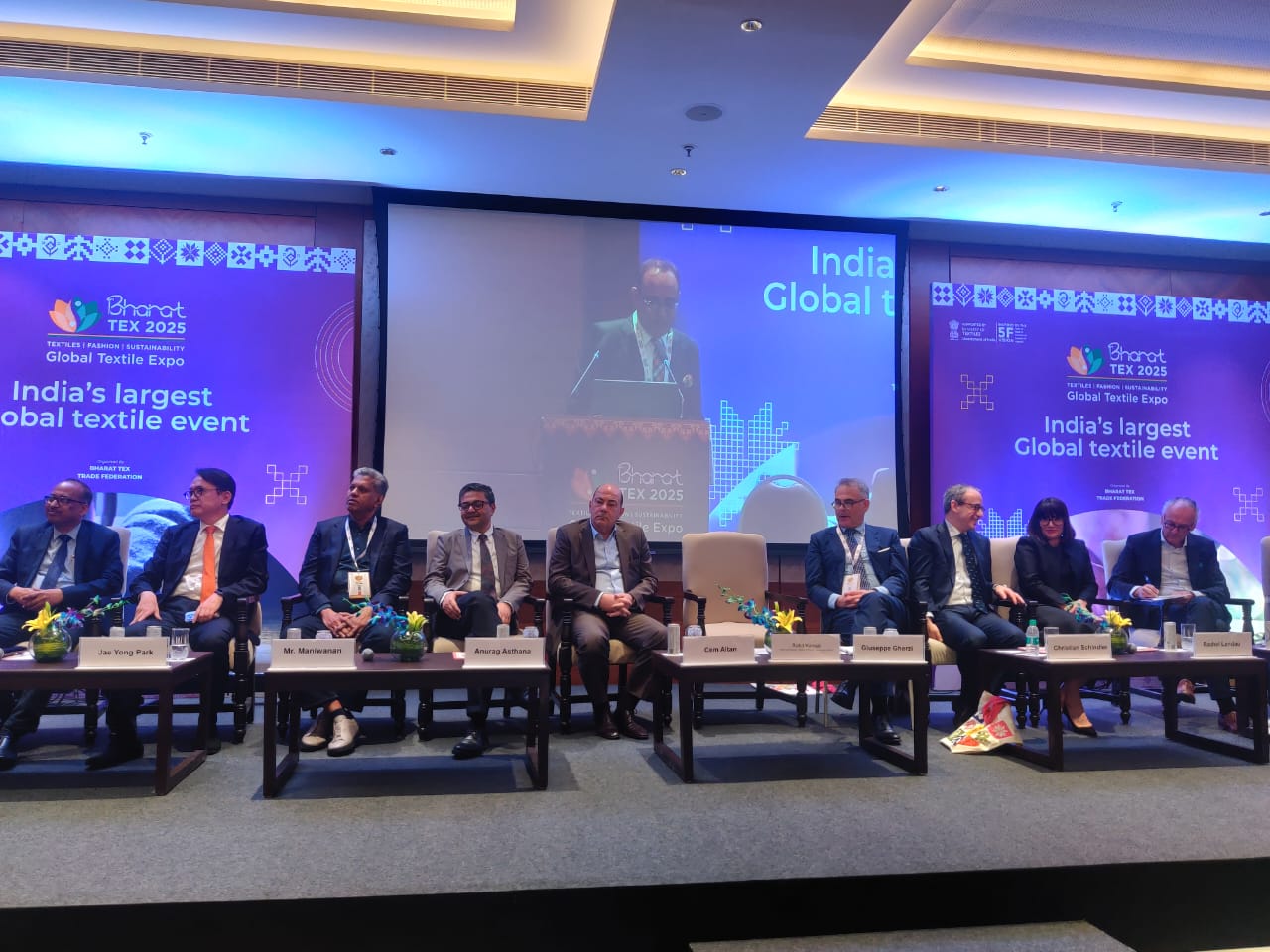
Sustainability Imperative: A must-have for global competitiveness
The discussion then shifted to the critical issue of sustainability. Schindler stressed the growing importance of sustainable practices, particularly for companies targeting European markets. He made it clear that sustainability is not a mere trend but a fundamental requirement for continued market access. He highlighted the increasing stringency of regulations and the need for suppliers to demonstrate their commitment to sustainability through verifiable data and digital transparency.
Digital Transformation and Sustainable Processes: Keys to competitive advantage
Schindler urged Indian textile companies to invest strategically in both digital technologies and sustainable processes. He emphasized that early adoption of these crucial elements would provide a significant competitive edge in the evolving global market. His message underscored the need for proactive adaptation and investment to stay ahead of the curve. Collaboration and Innovation: The path forward for India
The interactive session fostered a vibrant discussion on how India can effectively integrate sustainability into its textile production processes. Schindler advocated for collaborative efforts among all stakeholders, emphasizing that the transition to sustainable practices requires collective action and continuous innovation. He stressed the importance of a unified approach to address the complex challenges and capitalize on the emerging opportunities.
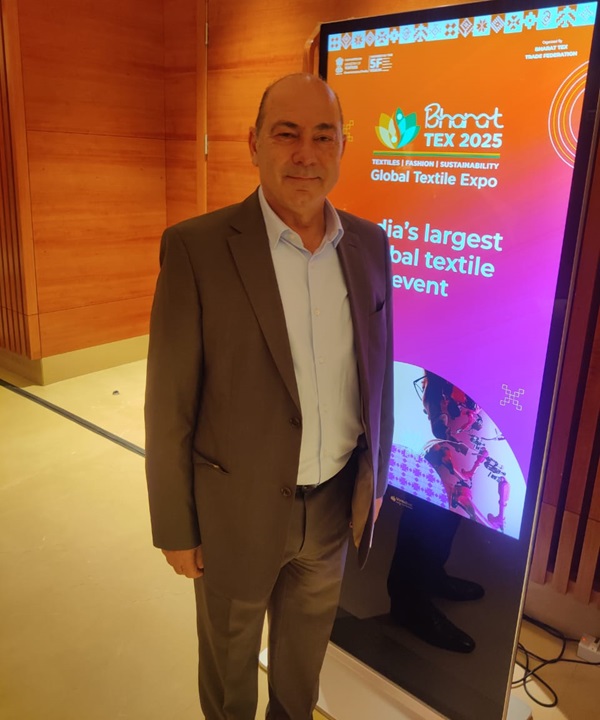
The Indian textile industry stands at a critical juncture. As global dynamics shift, the nation has a unique opportunity to ascend to a position of global leadership. This transformation, however, hinges on embracing sustainability, digitalization, and strategic collaboration, as emphasized by Cem Altan, President of the International Apparel Federation, while speaking at one of the knowledge sessions during Bharat Tex 2025.
Beyond Buzzwords: The cornerstones of future success
Altan's message was clear: the traditional model is no longer viable. "The textile and apparel landscape is undergoing a radical shift," he asserted. "Sustainability, digitalization, and automation are not optional; they are the cornerstones of future success." India, with its vast domestic market and established textile infrastructure, possesses immense potential. However, Altan stressed the need for a more outward-looking approach. "India must aggressively target export markets," he declared, highlighting the necessity of a focused marketing strategy to capture global demand.
Bridging the Gap: Supply chain integration and industrial clusters
A key challenge Altan identified is the need for improved supply chain integration. While acknowledging the presence of large, vertically integrated companies in India, he pointed to accessibility as a major hurdle. "International buyers often struggle to connect with the right suppliers," he explained. His solution? Investing in robust industrial clusters. "These clusters will foster collaboration, streamline supply chains, and simplify the sourcing process for global customers," he argued. This strategic clustering, combined with digitalization, will create a more transparent and efficient ecosystem, attracting international investment and driving export growth.
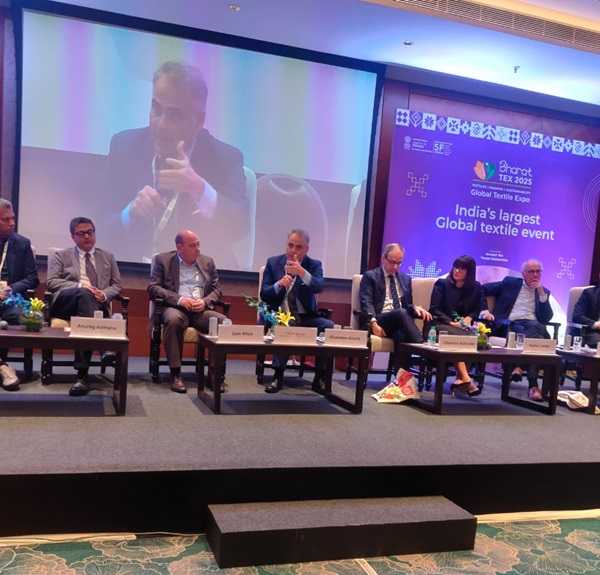
Inspiring a New Generation: The entrepreneur's journey
Altan's address resonated deeply with industry stakeholders. Young entrepreneurs, in particular, found his vision inspiring. Anaya, a budding designer with a passion for sustainable fashion, sought Altan's advice on launching her eco-conscious clothing line. "Focus on building strong relationships," he counseled. "Connect with like-minded individuals and organizations. Leverage technology to optimize your operations and minimize waste. Every step towards sustainability is a step in the right direction."
From Vision to Reality: Anaya's sustainable success story
Anaya's story exemplifies the transformative potential of Altan's vision. Embracing his guidance, she prioritized collaboration, working closely with local suppliers committed to sustainable practices. She also integrated digital tools into her design and production processes, enhancing efficiency and reducing her environmental footprint. Months later, at the subsequent Bharat Tex conference, Anaya proudly showcased her collection – a testament to the power of sustainable innovation. Her garments, crafted from recycled materials and produced with minimal environmental impact, garnered significant attention, demonstrating the growing demand for eco-friendly fashion.
The narrative of the Indian textile industry is being rewritten, with innovation, digitalization, and a deep commitment to a sustainable future. This transformation, driven by the insights, promises to position India as a dominant force in the global textile landscape.
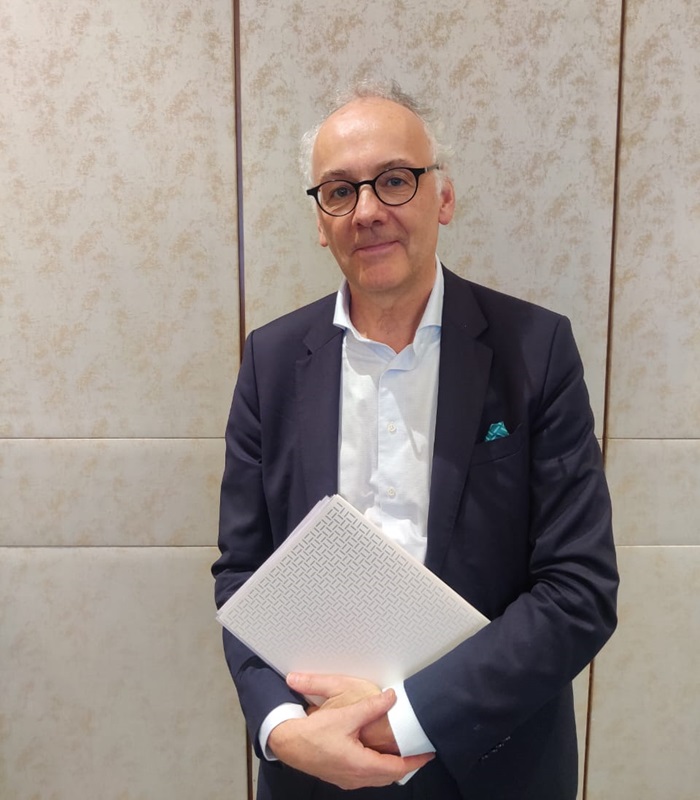
The global textile industry is undergoing a significant transformation, driven by evolving consumer demands, stricter regulations, and increasing pressure for sustainable practices. Dirk Vantyghem, Director General of Euratex(the European textile and apparel association) discusses a complex landscape shaped by sustainability imperatives and shifting global trade dynamics.
EU sets the pace for sustainable textiles
The European Union is emerging as a key driver of change, setting new standards for textile products entering its market. Vantyghem emphasizes the EU's commitment to enhancing quality and minimizing environmental impact, regardless of production origin. This translates to stricter requirements for recyclability, durability, transparency, and a significant reduction in harmful chemicals. With regulations slated for implementation in 2026, Vantyghem's message to international partners, including key players like India, is clear: compliance with these standards is non-negotiable for market access. This proactive approach positions Europe as a leader in sustainable textile production, compelling global manufacturers to adapt their practices.
The global sustainability imperative
While acknowledging the progress made by many European textile companies in adopting sustainable practices, Vantyghem recognizes the global nature of the challenge. He stresses that sustainability is not a competition between regions but rather a collective effort. The focus, he argues, should be on incentivizing and rewarding companies that invest in sustainable solutions, fostering a market environment that values responsible production. This approach encourages innovation and drives industry-wide adoption of eco-friendly technologies and processes.
Trade tensions and market volatility
The textile industry faces additional headwinds from global trade tensions and the potential for trade wars. Vantyghem expresses concern about the negative impact of such uncertainties on business confidence and global trade flows. He underscores the importance of stable international relations for fostering a healthy and predictable market environment. This stability is crucial for businesses to make long-term investments in sustainable practices and technological advancements.
A call for industry-wide transformation
Vantyghem's insights paint a picture of an industry at a critical juncture. The need to adapt to evolving regulations, embrace sustainable practices, and navigate geopolitical complexities is paramount. As Europe leads the charge towards a more sustainable textile sector, global producers must prioritize innovation and compliance to remain competitive. The future of the textile industry hinges on its ability to embrace responsible practices and create a circular economy that minimizes environmental impact.
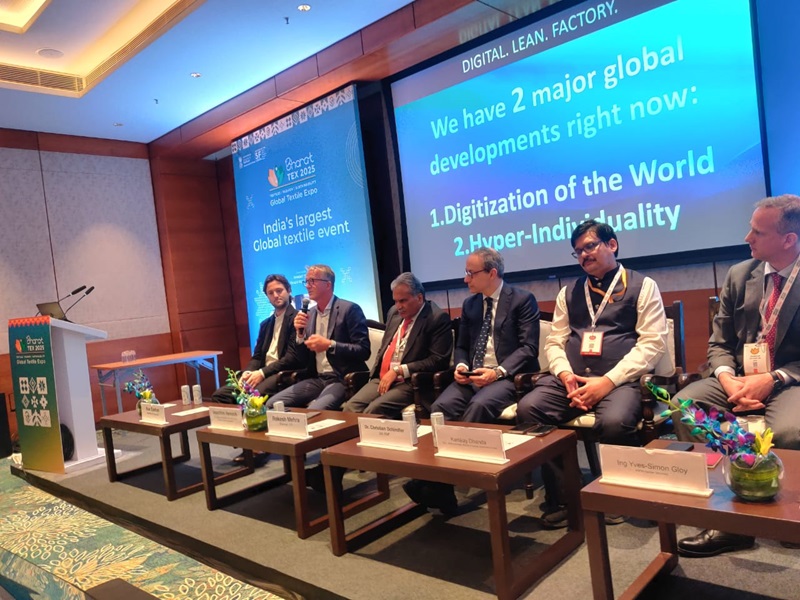
Joachim Hensch, a German Consultant, ex-MD Hugo Boss factory in Turkey, having transformed a factory consisting of 4000 workers into a smart factory, addressed industry professionals, during a Knowledge Session on Smart Manufacturing & Digitalisation during Bharat Tex, offering valuable insights into the transformative power of smart manufacturing and digitalization.
The rise of Hyper-Personalization
He began by emphasizing the critical shift away from traditional mass production towards a model centered on hyper-individuality. "We are no longer in an era where one-size-fits-all products dominate the market," Hensch stated, highlighting the growing consumer demand for personalized experiences. This shift, driven by the digital age, presents both opportunities and challenges for manufacturers. Meeting these individualized needs while maintaining profitability requires a fundamental rethinking of production strategies.
The power of the Digital Twin
A key concept Hensch introduced was the "digital twin" in manufacturing. Using Tesla's production line as an example, he explained how vehicles are capable of self-checking during assembly. "This is not just about quality control at the end of the line; it's about integrating intelligence into the manufacturing process itself," he noted. This proactive approach, characteristic of smart manufacturing, leverages technology and human oversight to ensure quality and efficiency throughout the production lifecycle. The digital twin allows manufacturers to simulate, analyze, and optimize production processes before physical implementation, leading to improved quality, reduced costs, and faster time-to-market.
Democratization of automation
Hensch showcased several innovations reshaping the manufacturing sector, including the increasing accessibility of autonomous robots. He cited the dramatic reduction in cost and increased functionality of these robots, making them viable for a wider range of applications. The plummeting price of robotic solutions is democratizing access to automation, enabling smaller manufacturers to compete with larger players and enhance their productivity.
The dawn of Humanoid Robotics
The presentation also explored the potential of humanoid robots, particularly Tesla's Optimus, to revolutionize factory operations. Hensch projected significant production numbers for Optimus, signaling a broader trend towards integrating advanced robotics into everyday manufacturing processes. The introduction of humanoid robots promises to further automate tasks, improve efficiency, and potentially reshape the manufacturing workforce.
The cultural imperative of Digital Transformation
Hensch emphasized that digital transformation is not just about technology; it requires a significant cultural shift within organizations. "Digital is not just a trend; it is a fundamental part of our lives," he asserted. He urged companies to adapt their production strategies to meet the demands of a fast-paced, consumer-driven market that expects rapid delivery and customization. This requires a shift in mindset, embracing data-driven decision-making, agile methodologies, and a culture of continuous improvement.
Adapt or be left behind
The session concluded with a stark reminder of the competitive landscape. Hensch highlighted the success of companies like Shein and Amazon, which leverage digital technologies to connect vast networks of factories and offer unprecedented production speeds. He warned that manufacturers who fail to embrace digital transformation risk being left behind. "Is your production ready for this?" he challenged the audience, stressing the urgency of adopting smart manufacturing and digitalization to remain competitive in the global market. Hensch's message was clear: in the age of hyper-personalization and rapid technological advancement, adaptation is not just an option, it's a necessity.
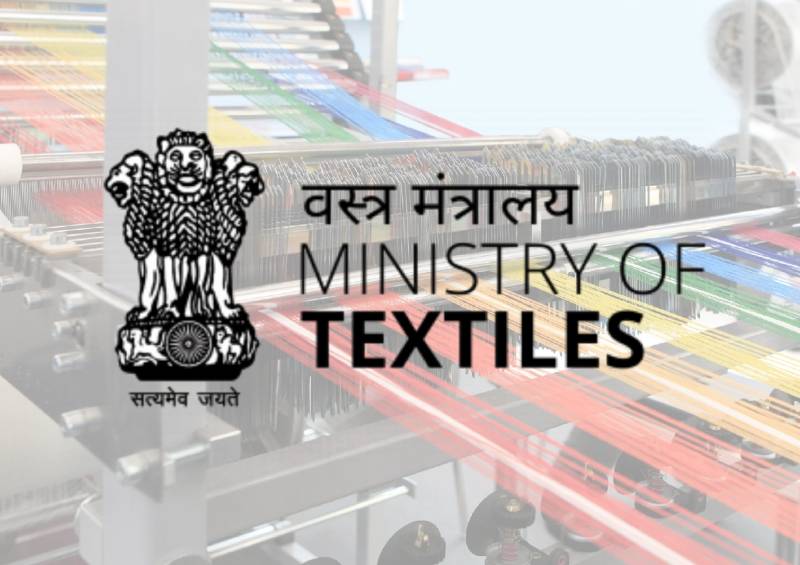
In a dynamic showcase of India's textile prowess, Yogesh Kansal, Additional Secretary of the Ministry of Textiles, addressed in one of the knowledge sessions during Bharat Tex 2025, an event that has a global audience from 120+ nations, alongside 5,000+ exhibitors. This event underscored the Ministry's commitment to transforming India into a dominant force in the global textile landscape.
A three-pronged strategy for growth
Kansal articulated the Ministry's three-pronged strategy: bolstering trade, attracting investment, and strengthening the domestic market. He emphasized India's position as a leading textile and apparel exporter, setting an ambitious target to more than double export figures within the next five years. The palpable enthusiasm at the exhibition signaled strong potential for achieving this goal.
India's unique textile ecosystem
India's textile ecosystem, uniquely encompassing the entire value chain from raw fiber to finished garment, was highlighted as a key strength. "We export raw cotton, fabrics, and designs," Kansal stated, emphasizing India's comprehensive capabilities. With a rich, five-millennia-long textile heritage, India consistently ranks among the world's top five nations in key textile metrics, including apparel exports and the overall scale of its textile sector.
Balancing domestic demand and global exports
The Ministry recognizes the importance of a robust domestic market, which is experiencing impressive annual growth of 7-8 per cent. This dual focus on domestic consumption and export markets strategically positions India for global success. "We are home not just to natural fibers but also to man-made fibers," Kansal added, showcasing the breadth and depth of India's textile production capacity.
Supportive government policies and stable macroeconomic conditions
Government stability and supportive policies are crucial enablers of this growth. Kansal emphasized the stable political environment, low inflation, and favorable macroeconomic conditions that contribute to India's journey towards a $5 trillion economy. He showcased key Ministry initiatives, including the PM Mitra scheme and the National Technical Textile Mission, designed to enhance the competitiveness of the Indian textile industry.
Incentives and Support Mechanisms for Stakeholders
Kansal proactively engaged stakeholders, outlining the extensive range of subsidies and support mechanisms available at both central and state government levels. He explained the synergistic approach, noting, "If the federal policy is supporting a Mitra park, the state-level policy is providing direct capital subsidies and other incentives to reduce manufacturing costs," demonstrating a coordinated effort to optimize support for the sector.
A vision for long-term global leadership
The Ministry of Textiles' vision extends beyond mere economic growth; it is about crafting a narrative of resilience, innovation, and collaborative partnerships. With strong government support and a thriving textile ecosystem, India is poised to make significant strides on the world stage, solidifying its position as a vital player in the international textile market for generations to come.
Global textile leaders converge in New Delhi
Union Minister of Textiles Giriraj Singh inaugurated Bharat Tex 2025 at Bharat Mandapam, New Delhi, in the presence of buyers and government dignitaries from over 110 countries. The event aligns with the Prime Minister’s 5F vision - farm to fibre to factory to fashion to foreign, emphasizing India’s ambition to lead the global textile industry.
The inauguration featured a traditional lamp-lighting ceremony led by Singh, joined by Minister of State for Textiles Pabitra Margherita, Textiles Secretary Neelam Shami Rao, Additional Secretary Rohit Kansal, and other officials. The event focuses on transforming the industry through sustainability, circularity, and digitization. The AEPC Executive Committee members also attended the opening.
Sustainability at the core of Bharat Tex 2025
Addressing the gathering, Singh highlighted the government's initiatives to boost the sector and welcomed international buyers, stressing that Bharat Tex 2025 will provide an unparalleled business experience. AEPC Chairman Sudhir Sekhri noted that the event has attracted participation from over 110 countries and major global brands, reinforcing India's position as a reliable textile partner. Japan leads the list of apparel buyers, followed by the UAE, Iran, the USA, Spain, the UK, South Africa, Russia, and Australia.
Top international brands attending include Apparel Group (UAE), Primark Stores Ltd (Ireland), Adastria Co Ltd (Japan), Idkids (France), Melon Fashion Group (Russia), and Al Safeer Group (UAE), among others. Sekhri emphasized the growing importance of sustainability, with Bharat Tex 2025 showcasing organic fabrics, recycled materials, and energy-efficient production technologies.
India’s textile sector, once hampered by limited global engagement, is now at the forefront of international trade. The four-day event features exhibitions, knowledge sessions, thematic discussions, G2G and B2B meetings, MoUs, product launches, and interactive pavilions. Bharat Tex 2025 aims to set new benchmarks by integrating cutting-edge technology and eco-friendly practices.
The event is expected to attract over 6,000 international buyers and 120,000 visitors, including policymakers, CEOs, and industry leaders. Covering the entire textile value chain - fibre, yarn, fabrics, garments, home textiles, and technical textiles, Bharat Tex 2025 is poised to solidify India’s role as a global textile powerhouse.
The American Apparel & Footwear Association (AAFA) has responded to President Donald Trump’s decision to review all trading partners for potential countermeasures rather than imposing immediate reciprocal tariffs.
AAFA President and CEO Steve Lamar acknowledged the administration’s goal of reducing foreign trade barriers but cautioned against a tariff-heavy strategy. “We appreciate the effort to lower tariff and non-tariff barriers and welcome a comprehensive review of foreign policies,” he said.
However, Lamar warned that this approach risks economic prosperity by overlooking the crucial role of ethical and fairly traded imports. “Putting America first means ensuring stability for businesses, affordability for consumers, opportunities for farmers, and support for millions of trade-dependent US jobs,” he stated. He argued that sweeping tariffs could raise costs for manufacturers, restrict export markets for farmers, and increase consumer prices.
AAFA emphasized the importance of predictability in trade policy and urged collaboration with Congress, which holds constitutional authority over tariffs. “We look forward to contributing to this review and working with the administration to develop a strategy that truly benefits the US economy,” Lamar concluded.
Invista has opened its new $13 million Texas Technology Center (TTC) in Katy, Texas. This nearly 40,000-sq-ft facility will house over 50 R&D, engineering, advanced process control, EHS, transformation, and project team members, along with data scientists.
The TTC will support Invista's global technology needs for its Nylon and Propylene businesses, focusing on chemical intermediates and polymer product lines. It features advanced analytical and experimental capabilities to accelerate Invista's research and development programs.
Jerry Grunewald, Vice President-R&D, Invista, states, the TTC will be a hub for innovative projects and partnerships, keeping the company at the forefront of the industry. To meet customers’ demands Invista will continue to focus on innovation, he emphasizes.
Brook Vickery, President and CEO, Invista, opines, the TTC will accelerate the teams' contributions to advancing the company’s businesses. Its Asia Innovation Center in Shanghai provides world-class facilities on both continents, he notes. The company’s teams are making new discoveries and developments to meet its customers’ demands and drive innovation.
The TTC will support Invista’s use of advanced technologies and the development of new, innovative products to address unmet market needs.
Karl Mayer has been equipping customers with warp knitting expertise since 1960, and its training programs remain highly sought after. In 2024, the company conducted 104 courses for 432 learners across academies in Germany, China, India, Japan, and Turkey. Its online training platform, launched in 2022, is also gaining traction, with 564 active accounts from 50 countries by December 2024.
“We’re seeing a shift from on-site training to digital formats,” says Sophia Krinner, Product Owner Academy at Karl Mayer. Many professionals now find online courses sufficient, reducing the need for travel. The 2025 program opens for enrollment in January, with a 25 per cent discount on the ‘Introduction to Warp Knitting’ e-learning course in February.
While over half of last year’s courses followed the standard program, demand for specialized training is rising, particularly in fishing net production, process optimization, and quality improvement. These sessions often take place at customers’ facilities, ensuring practical relevance.
Trainees praise the courses for enhancing their technical skills. “I now understand the connection between machine parts and product properties,” says Fang of Shawmut Corp., USA. Others highlight the impact on their daily work and design innovations.
Karl Mayer continues expanding its digital offerings, adding courses on energy efficiency and textile analysis in 2024. A new warp knitting knowledge check, launched in January 2025, helps customers assess their skills and choose the right courses.

